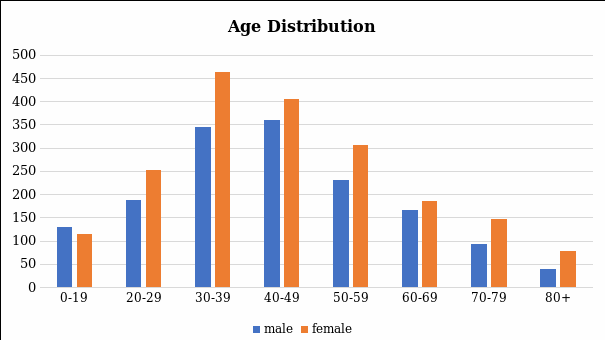The Valley Health Care System created the Innovation Center that should develop a new approach to primary care using the most recent technologic advancements in the healthcare field. The current patient visit involves some unnecessary steps, such as making an appointment through a call, checking in at the desk, and completing medications and history forms. This approach would be appropriate if it were not time-wasting because sometimes patients must wait long before their call is accepted. It was particularly prominent during the COVID-19 pandemic because health demands expanded substantially (Krist et al., 2020). Furthermore, the time and date of the appointment may be inconvenient for them. Another problem with the current system is that there is no direct follow-up, and no information is collected between the visits. Moreover, a patient cannot track their progress in terms of attaining a specific health goal. These issues can be addressed using online registration for an appointment with wearable health-tracking devices and smartphone apps.
Health and wellness technology have gained increased interest from public health organizations and businesses because it not only helps ameliorate medical services but also improves patient outcomes. For example, wearable devices can assist in monitoring activity and vital signs, while various apps help track diet, weight, and sleep patterns (Orji & Moffatt, 2018). Furthermore, online registration platforms can be used to make this process more comfortable for patients since there is no need in modern times to call. In fact, artificial intelligence software can recognize common patterns related to people’s responses to health and disease. Hence, it can be employed to simplify the steps to sign in for a doctor’s appointment. Virtual health logs and reminders can enhance individuals’ compliance with the treatment and assist clinicians in assessing patients’ progress (Orji & Moffatt, 2018). Technology can become a powerful asset for this hospital to improve primary care by making it more convenient and less bureaucratic.
Descriptive analysis can be implemented to visualize the data set in this case. It allows for visualizing information and making it easier to evaluate (Brownstein et al., 2019). For example, Figure 1 demonstrates age distribution among male and female participants. Table 1 shows how many hours per week male and female participants sleep, socialize, watch TV or surf the Internet. It appears that some of the participants sleep, socialize, and watch TV too much or too few hours weekly.

Table 1. Sleeping, socializing, and using TV/Internet (hours per week).
The main recommendation, in this case, is to choose the median number of hours in each category and suggest that patients set such notifications in the apps that track their sleeping and activity patterns. However, the advanced settings should align with the needs of an individual’s age, health status, and occupation. For example, children and adolescents may be recommended to sleep more, but their screen time should be limited. For adults, the latter may undoubtedly vary with one’s job and personal preferences. A physician can initially set the wearable devices and apps manually to attain a specific goal. For instance, a person with hypertension and diabetes should be more active to increase glucose consumption by muscles. On the other hand, a patient with end-stage renal disease or congestive heart failure cannot even walk for a long time. Thus, for now, each clinician will need to familiarize oneself with the technology to be able to help individuals attain certain health goals.
In summary, the proposed recommendation to improve patient care, wearable technology and smartphone apps can be utilized to make individual recommendations about health. The advantage of this proposal is that it helps the clinician to monitor patients’ activity and outcomes. However, the disadvantage is that it is costly, and the issues of digital privacy may be raised. Indeed, various malware exists nowadays that can steal data from these devices and harm people.
References
Brownstein, N. C., Adolfsson, A., & Ackerman, M. (2019). Descriptive statistics and visualization of data from the R datasets package with implications for cluster ability.Data in Brief, 25, 1–18. Web.
Krist, A. H., DeVoe, J. E., Cheng, A., Ehrlich, T., & Jones, S. M. (2020). Redesigning primary care to address the COVID-19 pandemic in the midst of the pandemic. The Annals of Family Medicine, 18(4), 349-354. Web.
Orji, R., & Moffatt, K. (2018). Persuasive technology for health and wellness: State-of-the-art and emerging trends. Health Informatics Journal, 24(1), 66-91. Web.